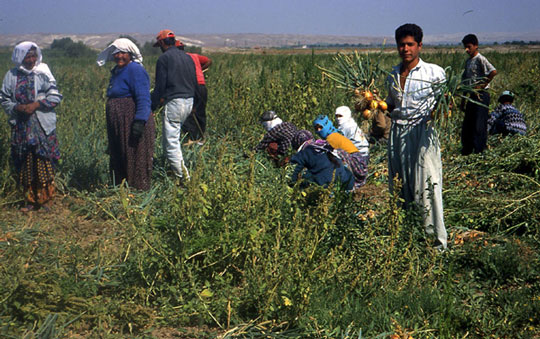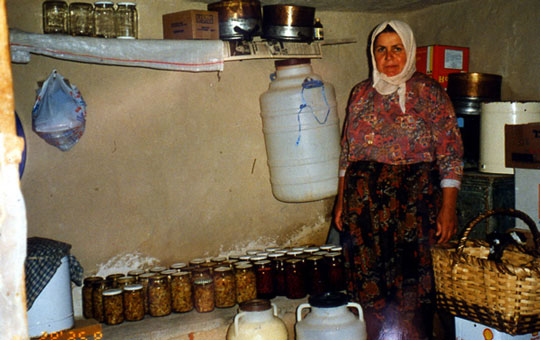Ethnoarchaeology

In 1995 Dr. Ayşe Gürsan-Salzmann initiated the Gordion Ethnoarchaeology Project as a component of the Gordion Excavations, with the aim of explaining/interpreting the distant past by drawing analogies/comparisons with living communities. She selected as her primary focus the contemporary village of Yassıhöyük, which sits on the ancient settlement of Gordion. Between 1998 and 2005, she expanded the field study to include the larger region in the Sakarya-Porsuk river valleys, encompassing 14 villages within a distance of 18–40 km from Yassıhöyük. Surveys in this region have documented settlements of Bronze Age and pre-Bronze Age date, while Gordion features a continuous sequence of settlements spanning nearly three millennia.
At the core of ethnoarchaeology is ethnographic observation of contemporary cultures, which can provide rich information regarding material culture (attributes and use of artifacts) as well as their sociocultural context. This is crucial for understanding past human behavior, which is largely missing from the archaeological record. While it would be wrong to assume one-to-one comparisons between the distant past and the present, ethnographic analogies can nevertheless provide suggestive examples to explain the past for further testing against the archaeological data.
Using traditional ethnographic methods of participant observation and interviewing, Dr. Gürsan-Salzmann collected four types of ethnographic data related to changing strategies of traditional lifestyles practiced from the pre-1950s to the present. Specifically, she concentrated on the transition from a strong pastoral economy and non-mechanized agriculture, with oxen and plough, to intensive irrigation agriculture; traditional household tools and their past and present uses; food preparation and discard patterns; and vernacular versus modern architectural styles as they reflect changing household organization.
One example of analogical reasoning from Dr. Gürsan-Salzmann’s work deals with the Phrygian pastoral economy of Gordion. Large numbers of archaeological artifacts related to pastoral economy have been retrieved in Phrygian workshops (e.g. weaving tools, spindle whorls, and loom weights). To what extent and under what conditions could a pastoral economy exist, flourish, and finally decline? She investigated ethnographic conditions relevant to these questions on a regional level.
Until the 1950s, pastoralism was the main component of the mixed economy in the region; it subsequently declined by 50%, yielding to intensive wheat agriculture. Two approaches were used to understand the change: 1) land-use survey to document old pastoral sites (50 years and earlier), focusing on their size and location in both upland areas and plains, and 2) interviewing old shepherds to understand their pastoral strategies in the past.
Study of the changing pastoral economy during the recent past revealed a complex set of interconnected factors, environmentally determined and culturally selected by the community of modern pastoralists. While it is not feasible to make direct analogies between the pastoral economy of the recent past and that of 3,000 years earlier, in this case study she has used a set of interrelated economic principles as analogy between modern and ancient Gordion.
Assuming that archaeological artifacts are residues of human behavior, the ethnographic model would suggest a broad socio-economic context and household-based organization for interpretation of the excavated artifacts. Her information collection focused on traditional subsistence methods as well as changing agricultural and pastoral strategies, from oxen-and-plough to highly efficient harvester-combine machinery. These day-to-day activities reflect the social fabric of the village community.



Further reading
- Gürsan-Salzmann, A. 2005. “Ethnographic Lessons for Past Agro-Pastoral Systems in the Sakarya-Porsuk Valleys,” in The Archaeology of Midas and the Phrygians: Recent Work at Gordion, ed. L. Kealhofer, Philadelphia, pp. 172-189.

